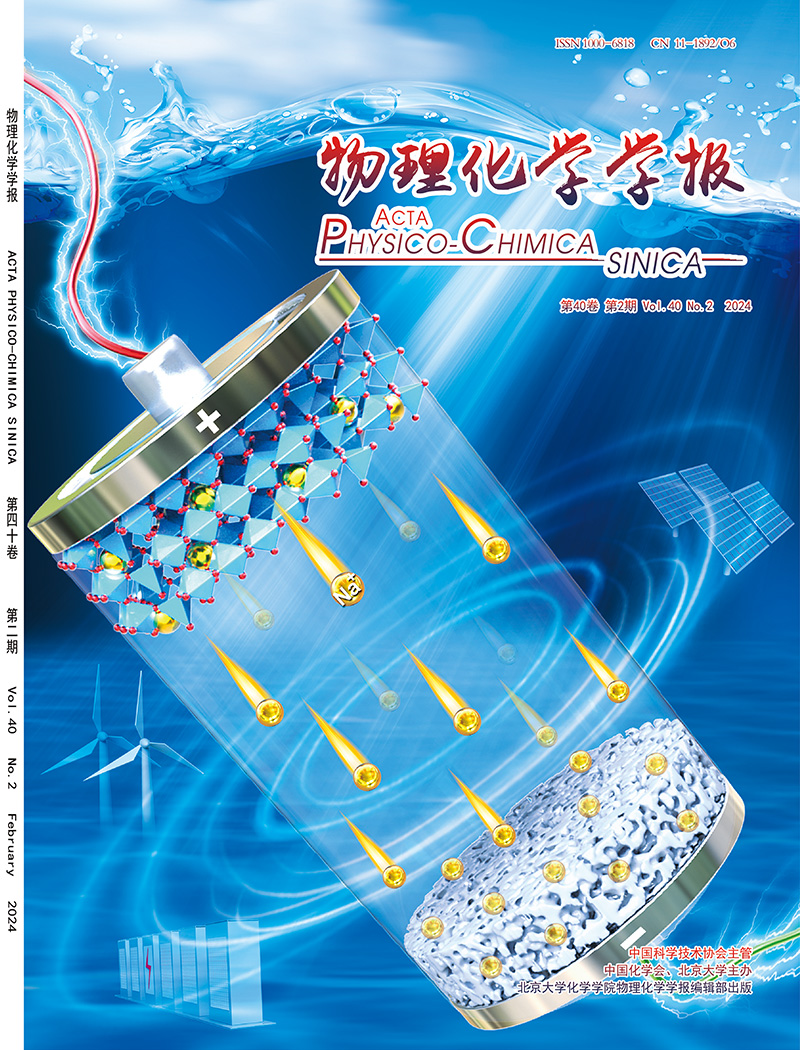Revealing Photoinduced Charge Transfer Mechanism of SnO2/BiOBr S-Scheme Heterostructure for CO2 Photoreduction
IF 13.5
2区 化学
Q1 CHEMISTRY, PHYSICAL
引用次数: 0
Abstract
S-scheme heterojunctions can preserve strong redox capacity on the basis of achieving spatial separation of photogenerated carriers. Therefore, a deep comprehension of the photoinduced charge transfer dynamics in S-scheme heterostructures is vital to enhancing photocatalytic properties. Herein, SnO2/BiOBr S-scheme heterojunctions with tight contact are fabricated with in situ hydrothermal method. The optimal SnO2/BiOBr exhibits excellent photocatalytic performance for CO2 reduction, with yields of CO and CH4 of 345.7 and 6.7 μmol∙g–1∙h–1, which are 5.6 and 3.7 times higher than those of the original BiOBr. The photoinduced charge transfer mechanism and dynamics of SnO2/BiOBr S-scheme heterostructure are characterized by in situ X-ray photoelectron spectrum (XPS) and femtosecond transient absorption spectroscopy (fs-TA). A new fitted lifetime of photogenerated carriers are observed, which could be attributed to interfacial electron transfer of S-scheme heterojunction, further illustrating an ultrafast transfer channel for photoelectrons from SnO2 conduction band to BiOBr valence band. As a result, the powerful reduced electrons in BiOBr conduction band and the powerful oxidation holes in SnO2 valence band are retained. This work provides profound comprehension of photoinduced charge transfer mechanism of S-scheme heterojunction.
- Download: Download high-res image (85KB)
- Download: Download full-size image
SnO2/BiOBr S-Scheme异质结构光致电荷转移机理研究
s型异质结在实现光生载流子空间分离的基础上保持了较强的氧化还原能力。因此,深入了解s型异质结构的光诱导电荷转移动力学对提高光催化性能至关重要。本文采用原位水热法制备了SnO2/BiOBr s型紧密接触异质结。优化后的SnO2/BiOBr具有良好的光催化CO2还原性能,CO和CH4的产率分别为345.7 μmol∙g-1∙h-1和6.7 μmol∙g-1∙h-1,分别是原BiOBr的5.6和3.7倍。利用原位x射线光电子能谱(XPS)和飞秒瞬态吸收光谱(fs-TA)表征了SnO2/BiOBr S-scheme异质结构的光致电荷转移机理和动力学。光生载流子具有新的拟合寿命,这可归因于s型异质结的界面电子转移,进一步说明了光电子从SnO2导带到BiOBr价带的超快转移通道。因此,BiOBr导带中强大的还原电子和SnO2价带中强大的氧化空穴得以保留。本研究对s型异质结的光致电荷转移机理提供了深刻的理解。下载:下载高清图片(85KB)下载:下载全尺寸图片
本文章由计算机程序翻译,如有差异,请以英文原文为准。
求助全文
约1分钟内获得全文
求助全文

 求助内容:
求助内容: 应助结果提醒方式:
应助结果提醒方式:


